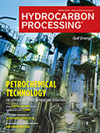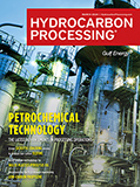Desulfurization
Executive Viewpoint: Sulfur removal and much more
Hydrocarbon Processing (HP) sat down with Pinti Wang (PW), President and CEO, GTC Vorro Technology, to get his insights on sulfur removal processes, technology licensing and other topics within the process industries. Wang was the recipient of Hydrocarbon Processing’s 2019 Lifetime Achievement Award.
2022 HP Awards Finalists
<em>Hydrocarbon Processing</em>, the downstream processing sector’s leading technical publication for 100 yr, has announced the finalists for its sixth annual <em>HP</em> Awards, which celebrate innovative technologies and people that have been instrumental in improving facility operations over the past year.
History of the HPI: The 2000s: Net-zero, environmental regulations, capacity acceleration and digital transformation
This final installment of the History of the HPI series details major events in the refining and petrochemicals industry over the past 20 yr, including stricter regulations/initiatives to curb carbon emissions, a safer and more environmentally friendly way to produce and handle chemicals, significant capital investments to boost production capacity and digital transformation.
McDermott wins FEED contract from Viva Energy Australia
McDermott International has been awarded a FEED contract from Viva Energy Australia as part of its Geelong Refinery project to provide additional desulfurization capabilities.
The downstream rundown: In case you missed it 08/12
In case you missed any downstream news, here are the top stories from last week.
History of the HPI: The 1990s: Clean fuels and emissions mitigation, M&A, GTL and the fieldbus wars
Much like several initiatives passed in the 1970s and 1980s, the 1990s were a decade heavily focused on environmental issues, with many new regulations being enacted to not only mitigate industrial and vehicle emissions but also to advance the production of clean fuels globally.
History of the HPI: The 1980s: Oil spike/collapse, liquid crystals, conducting polymers and the rise of AR/VR
Several major impactful events took place in the global oil and gas and petrochemical industries in the 1980s.
Xylene-loop scheme for minimized GHG emissions and PX production cost
Molecular management, energy efficiency and carbon dioxide (CO<sub>2</sub>) emissions have become major focuses for petrochemical complexes, including aromatics plants.
History of the HPI: The 1950s: Capacity expansion, HDPE/PP, polycarbonate, computers and rocket science
The 1950s marked an evolution in the use of oil by nations around the world.
Industry Pioneers: Polymer science, catalytic cracking, petrochemicals and EPC
Waldo Semon was an American chemist whose detour with assigned laboratory research at B. F. Goodrich led to the development of vinyl—the second best-selling plastic in the world.

- Renewable fuels project in Canada begins production 4/19
- Jet fuel demand growth lags as air traffic exceeds pre-pandemic level 4/19
- Jet2.com to use SAF at London Stansted Airport 4/19
- Neste and New Jersey Natural Gas target reducing greenhouse gas emissions with Neste MY Renewable Diesel 4/19
- Cepsa and Evos join up for green methanol storage in Spain and the Netherlands 4/19
- Russia's Bashneft oil company installs anti-drone nets to protect refineries 4/19




